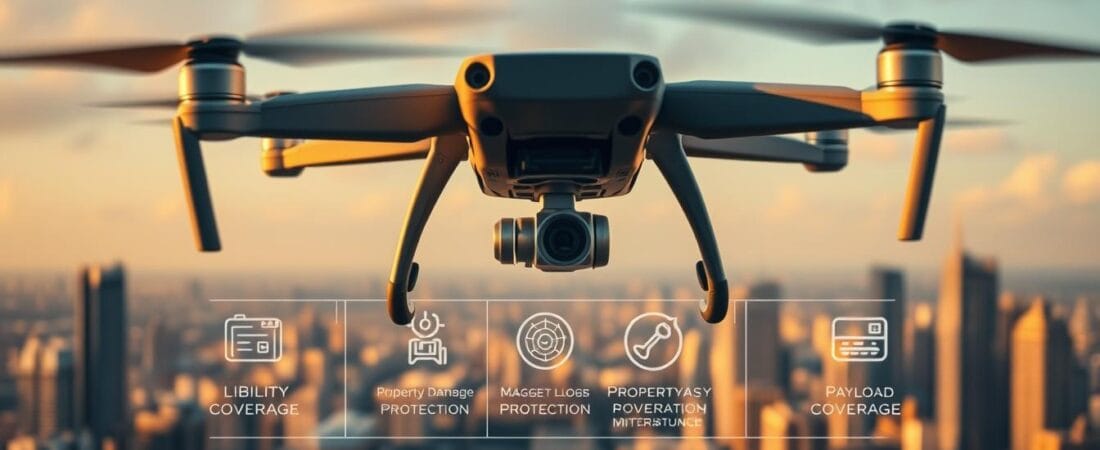Over 1.5 million unmanned aerial vehicles are projected to operate commercially in the U.S. by 2025—yet fewer than 40% of operators currently carry adequate coverage. As industries from agriculture to film production increasingly rely on aerial technology, the gap between adoption and risk management grows alarmingly wide.
Advanced hardware and software have transformed how businesses deploy these tools, but even cutting-edge systems aren’t immune to accidents. Technical failures, environmental hazards, and human error can lead to costly liabilities. For example, a single collision involving property damage or third-party injury could cripple an unprepared enterprise.
Specialized policies now address these unique challenges, blending traditional liability frameworks with modern adaptations. Coverage options range from equipment protection to privacy breach safeguards, reflecting evolving regulatory demands. Operators must also weigh factors like flight frequency, payload value, and operational zones when selecting plans.
This guide unpacks critical strategies to balance cost efficiency with comprehensive safeguards. Whether managing a fleet or piloting solo ventures, proactive planning ensures compliance and financial stability. For broader insights on mitigating digital risks, explore cybersecurity protections tailored to modern enterprises.
Key Takeaways
- Commercial aerial operations face rising regulatory scrutiny and liability exposure.
- Equipment malfunctions and operational errors remain top causes of claims.
- Customizable policies now cover niche scenarios like data breaches and payload losses.
- Premiums vary based on flight patterns, geography, and equipment value.
- Early adoption of tailored coverage prevents gaps during industry-standard shifts.
Introduction to Drone Insurance
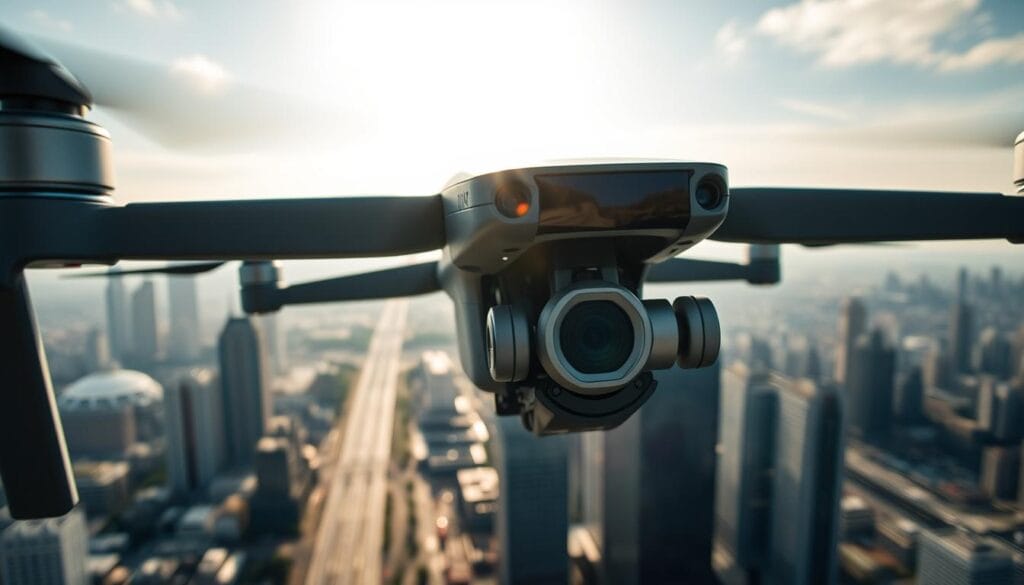
Aerial technology’s rapid adoption brings hidden vulnerabilities even seasoned operators often overlook. Wind shifts, equipment malfunctions, or navigation errors can trigger six-figure liabilities in seconds. Robust safeguards transform these risks from business-ending threats to manageable operational costs.
Why Protection Matters
Every flight carries inherent dangers. A camera operator capturing rooftop footage might accidentally damage historic architecture. Agricultural surveyors could collide with power lines during low-altitude missions. Without proper liability coverage, repair bills and legal fees devastate budgets.
Operational Advantages
Clients increasingly demand proof of financial responsibility before signing contracts. Specialized policies address equipment failures, data loss, and third-party injuries during complex projects. One construction firm avoided bankruptcy when their plan covered a $80,000 crane damage incident caused by gust interference.
Regulatory bodies now mandate minimum coverage levels in most states. Operators balancing multiple contracts benefit from tailored plans adapting to unique flight patterns and payload values. This strategic approach maintains compliance while protecting profit margins.
Understanding drone insurance for commercial use 2025
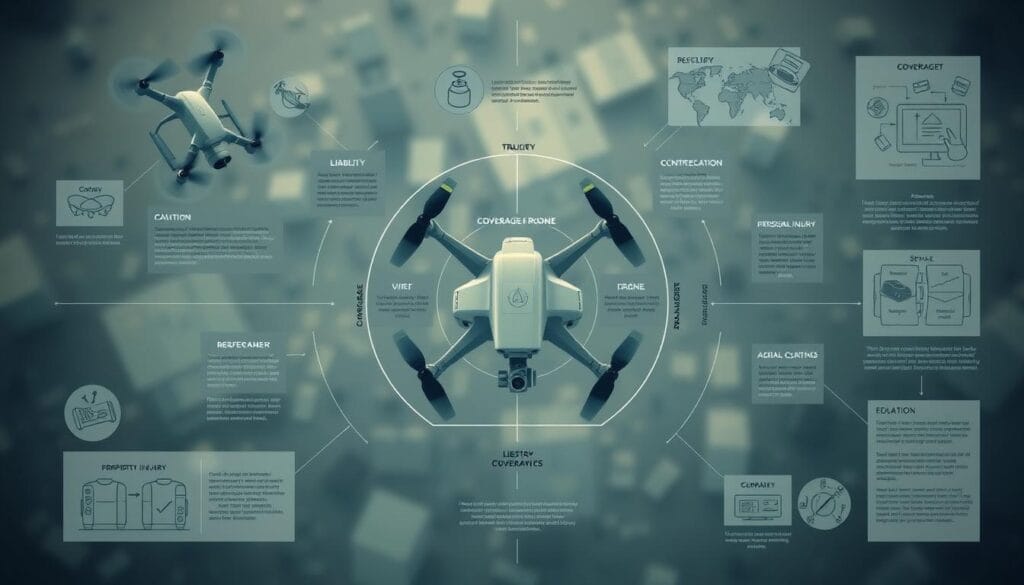
Navigating aerial operations requires precise risk assessment strategies beyond basic equipment safeguards. Modern policies combine physical asset protection with evolving liability demands, creating layered security for businesses.
Key Coverage Components
Hull coverage addresses repair or replacement costs for structural damage caused by collisions or environmental factors. This includes rotor malfunctions and weather-related incidents. Separate payload protection applies to attached equipment like cameras or sensors, often requiring specific valuation methods.
Third-party claims management forms the core of liability insurance. A recent FAA report shows 62% of aerial incidents involve property damage, emphasizing this component’s critical role. Policies typically cover legal fees and settlements if operations harm others’ assets or safety.
Policy Limitations and Exclusions
Most agreements exclude damage from intentional acts or unauthorized modifications. Wear-and-tear depreciation on older models often reduces payout amounts. One agricultural operator faced denied claims after flying in restricted airspace despite policy warnings.
Data collection errors and software glitches frequently fall outside standard protections. Operators using custom-built attachments may need endorsements for full coverage. Regular policy reviews ensure alignment with changing flight protocols and equipment upgrades.
Types of Drone Insurance Policies
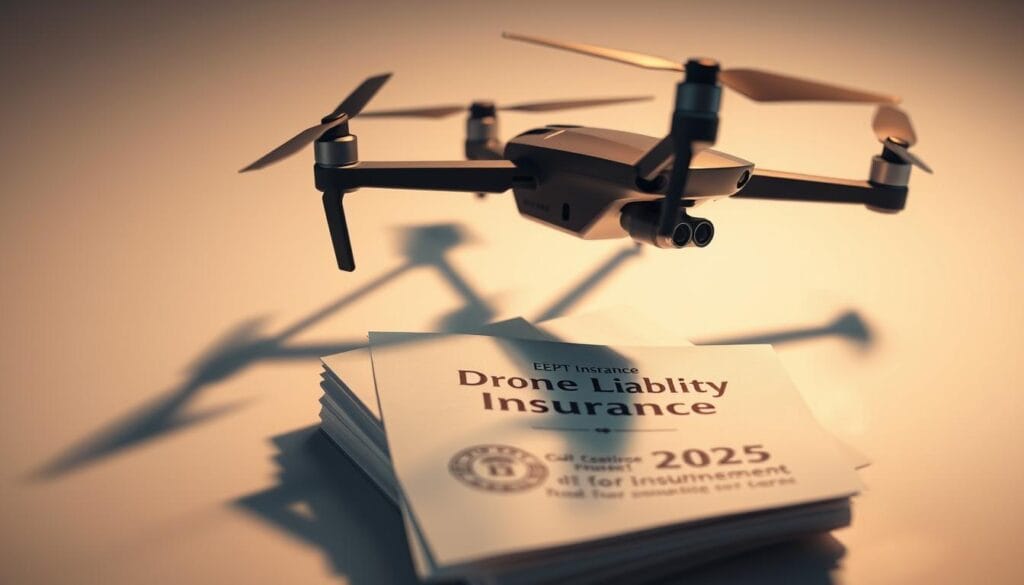
Operators face critical decisions when selecting financial protections tailored to their workflows. Policies now address diverse scenarios, from sensor malfunctions to legal disputes over airspace usage. Providers like SkyWatch offer modular plans that adapt to evolving industry standards.
Liability Insurance Explained
Third-party liability coverage remains non-negotiable for professionals. It handles claims if a pilot accidentally damages property or injures bystanders. A real estate photographer avoided bankruptcy when their policy covered $47,000 in roof repairs after an autopilot error.
Hull and Payload Coverage
This protection addresses physical damage to aircraft frames and attached tools. Repair costs for rotor strikes or water exposure often exceed $5,000. Payload safeguards extend to specialized equipment like thermal cameras, using agreed value assessments for replacements.
Additional Equipment and Non-Owned Coverage
Pilots using rented devices or secondary sensors need extended plans. One surveyor recovered $12,000 for a drowned LIDAR unit through add-on clauses. Non-owned options protect against liabilities when operating client-provided hardware, crucial for contractors managing multiple projects.
Digital risks increasingly intersect with aerial operations. Those handling sensitive geospatial data should review cyber liability solutions alongside traditional safeguards. Regular policy audits ensure alignment with new FAA mandates and equipment upgrades.
Assessing Insurance Coverage Options for Your Drone Operations
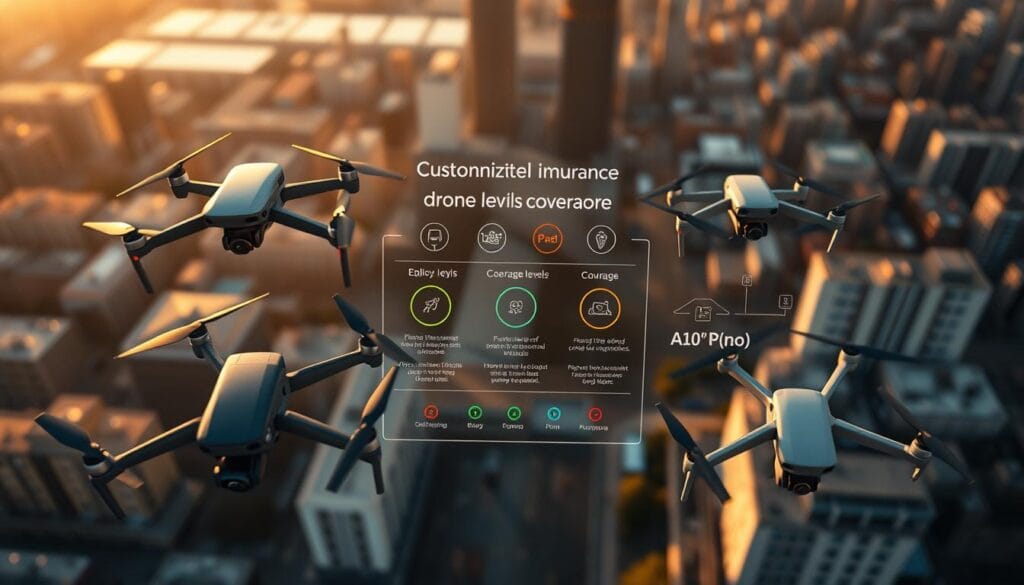
Tailoring financial safeguards requires analyzing how flight patterns intersect with operational demands. Operators balancing urban inspections and rural surveys face distinct exposure levels, demanding adaptable solutions. Customizable plans now account for variables like mission duration, payload sensitivity, and regional regulations.
Customizing Coverage for Different Needs
High-frequency operators conducting daily infrastructure checks benefit from annual policies with bulk discounts. Seasonal agricultural users might opt for pay-per-flight models. One logistics company reduced premiums by 18% after demonstrating three years of incident-free flights through detailed logs.
Equipment value and pilot certifications also influence terms. Providers often offer enhanced protections for teams using collision-avoidance systems or certified pilots. These adjustments ensure businesses only pay for necessary safeguards, aligning costs with actual risk profiles.
Evaluating Risks in Various Environments
Urban operations face unique challenges like signal interference and airspace congestion. Coastal surveyors must factor in saltwater corrosion and unpredictable wind patterns. A recent study showed weather-related claims increase by 40% in mountainous regions compared to flat terrains.
Operators can compare coverage rates across providers to identify plans addressing their specific environmental risks. Fleet managers should review geographic claim data annually, adjusting deductibles based on emerging patterns in their service areas.
Evaluating Costs and Savings Strategies
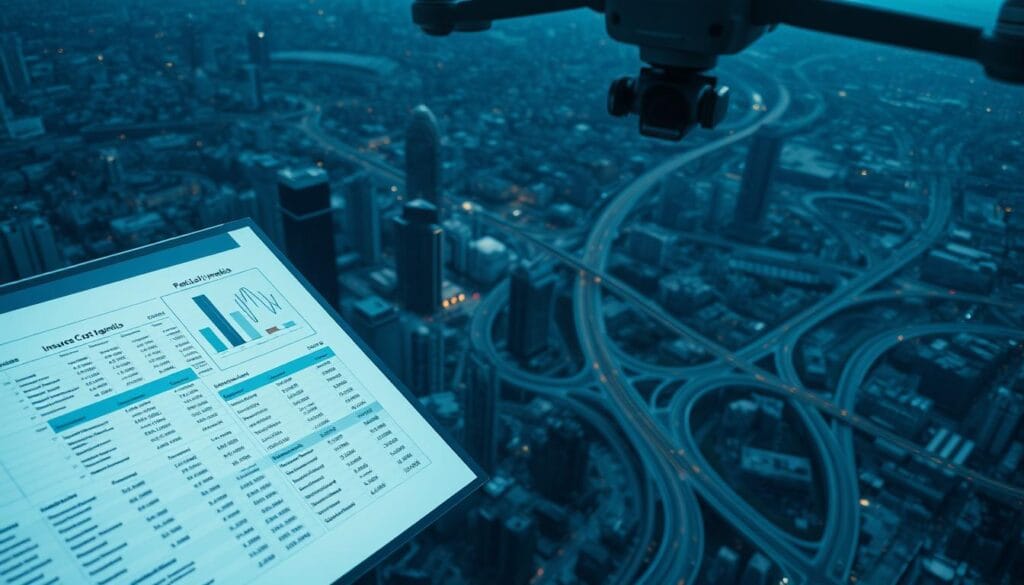
Financial planning for aerial operations demands precise cost analysis blended with proactive risk management. Three primary elements shape policy expenses: equipment value, operational patterns, and regional variables. Providers like SkyWatch report 35% price differences between urban and rural coverage plans due to collision risks.
Factors Influencing Policy Costs
High-value equipment increases premiums significantly—a $25,000 imaging system typically adds $1,200+ annually. Operators conducting daily flights pay 18% more than occasional users, according to 2024 industry data. Coastal regions see 22% higher claims than inland areas, reflecting weather-related hazards.
Tips to Save on Insurance Expenses
Maintaining incident-free records for 12+ months often unlocks 15% discounts. Bundling multiple policies under one provider reduces administrative fees. SkyWatch’s annual plans cost 30% less per flight than hourly options for frequent operators.
Negotiate terms using certified pilot credentials or collision-avoidance system logs. Seasonal workers benefit from adjustable coverage that scales with project timelines. Always compare deductible structures—higher upfront payments can lower long-term costs without compromising protection levels.
Navigating Legal and Liability Considerations
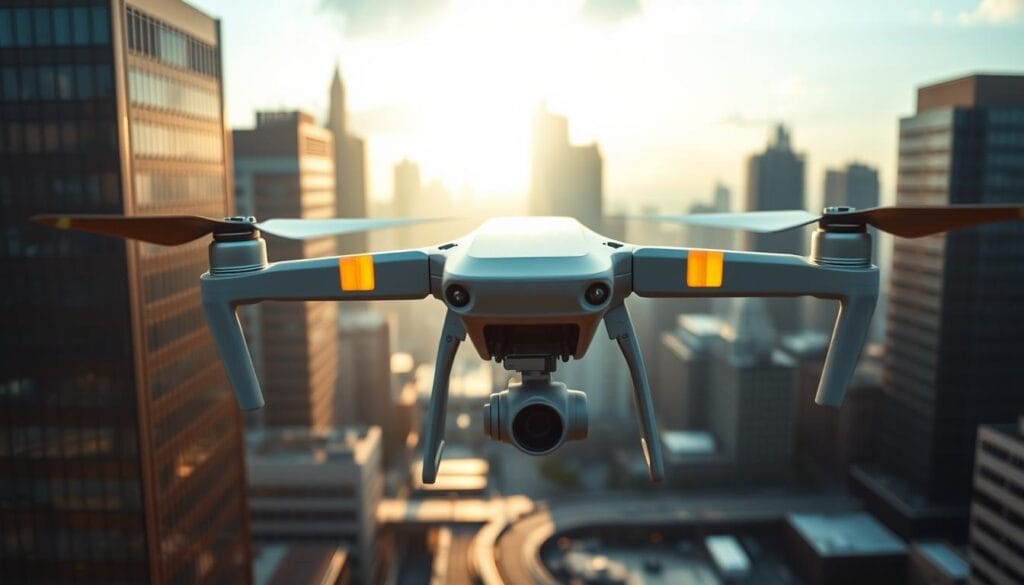
Federal Aviation Administration (FAA) reports show 73% of aerial operators face at least one regulatory inquiry annually. Regional laws and federal mandates create a complex compliance landscape where missteps trigger fines or operational suspensions. Operators must balance evolving airspace rules with liability coverage requirements that differ across state lines.
Understanding Legal Requirements
Twenty-eight states now require minimum $1 million liability policies for commercial aerial activities. The Hartford’s 2024 case study revealed a mapping company avoided $200,000 in penalties by aligning their plan with California’s strict privacy statutes. Key mandates often include:
- Airspace authorization documentation
- Equipment certification records
- Incident reporting protocols within 72 hours
Liability Coverage and Protection
Robust policies shield businesses when accidents occur. SkyWatch’s 2023 claims data shows 58% of payouts addressed bodily injury incidents involving third parties. A construction firm’s policy covered $145,000 in medical bills after a falling sensor injured a subcontractor.
Privacy protection clauses gain importance as surveillance capabilities expand. Operators capturing residential imagery may face lawsuits without specific endorsements. One real estate agency settled a $75,000 lawsuit through their policy’s data collection safeguards.
Compliance strengthens market credibility. Businesses adhering to FAA Part 107 standards often secure contracts requiring proof of protection measures. For broader financial security strategies, review trusted providers listed among the top life insurance companies for complementary risk management approaches.
Comparing Top Drone Insurance Providers
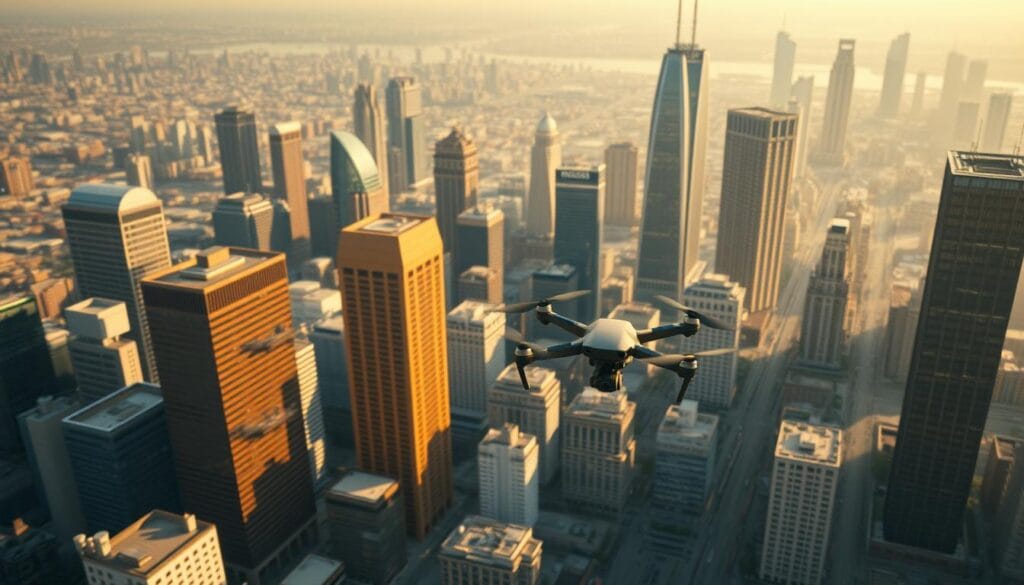
Selecting the right protection partner requires evaluating how policy structures align with business workflows. Leading companies differentiate themselves through specialized features addressing real-world operational challenges.
Provider Overviews and Strengths
SkyWatch dominates the market with AI-driven pricing models that adjust to seasonal flight patterns. Their instant policy activation appeals to drone pilots managing last-minute projects. AirModo excels in on-demand hourly coverage, ideal for infrequent operators needing flexible solutions.
Global Aerospace offers bundled packages for fleets, including maintenance tracking integrations. One logistics company reduced claim processing time by 53% using their automated incident reporting system. These providers maintain average response times under 4 hours for urgent inquiries.
Customer Reviews and Ratings
Recent Trustpilot data shows 92% satisfaction rates for insurers offering 24/7 claims support. Users praise SkyWatch’s mobile app for simplifying certificate sharing during client audits. One survey team noted: “Their team resolved a $14,000 equipment damage case within three business days.”
Critical feedback often targets unclear exclusion clauses in basic plans. Operators emphasize comparing supplemental options like weather-related downtime compensation. Providers scoring above 4.3/5 stars typically feature transparent pricing grids and real-time policy adjustments.
Customizing Insurance for Commercial Drone Pilots
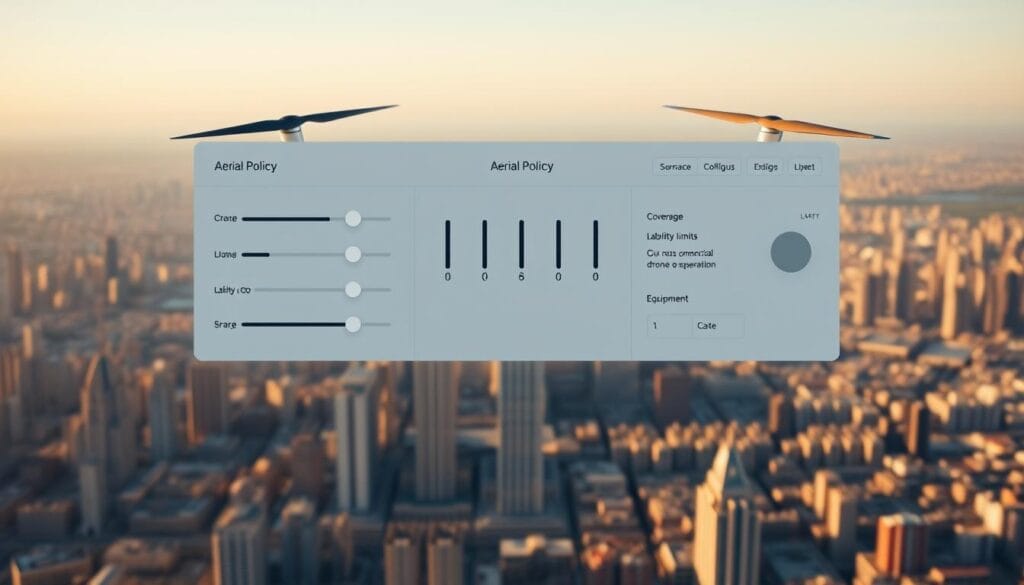
Adaptable protection frameworks now empower businesses to align safeguards with evolving operational realities. Providers increasingly offer modular solutions that scale with project complexity, enabling precise risk management for diverse workflows.
Tailoring Policies to Business Needs
Seasonal operators and full-time professionals require distinct approaches. Pay-per-use models benefit agricultural surveyors conducting monthly crop inspections, while media teams filming daily events prefer annual plans with bulk discounts. One logistics provider reduced premiums by 22% after demonstrating certified pilot training and collision-avoidance system usage.
Online policy modification tools allow real-time adjustments. Verifly’s dashboard lets users increase liability limits before high-risk urban missions or reduce coverage during equipment downtime. Mid-term endorsements address hardware upgrades without canceling existing agreements.
Exploring Add-on Coverages
Specialized attachments like multispectral sensors often demand payload protection beyond standard plans. These clauses cover repair costs for weather-damaged equipment or stolen data collection tools. A recent claim involved a $18,000 thermal camera replacement after saltwater corrosion during coastal inspections.
Non-owned coverage proves critical for contractors using client-provided devices. Coverdrone’s add-on shielded a cinematography team from $32,000 in liabilities when a rented gimbal malfunctioned mid-flight. Providers now bundle cyber liability options for operators handling sensitive geospatial information.
Three steps optimize customization:
- Audit equipment value and flight frequency quarterly
- Compare policy features across at least three providers
- Verify regional compliance updates through FAA-alert integration tools
Tips to Optimize and Maintain Your Insurance
Efficient management of aerial operational safeguards requires strategic alignment between documentation practices and evolving workflows. Proactive adjustments reduce administrative friction while ensuring uninterrupted coverage during equipment upgrades or regulatory shifts.
Policy Management Best Practices
Operators should review coverage terms quarterly, particularly after acquiring new sensors or expanding service areas. Digital tools like Fleetio track equipment depreciation rates, enabling accurate policy value adjustments. One inspection team avoided a 15% premium hike by submitting maintenance logs proving upgraded collision-avoidance systems.
Centralized record-keeping systems prove critical. Cloud-based platforms store flight logs, incident reports, and repair histories for instant insurer access during audits. This approach cut claim processing time by 40% for a Midwest surveying company last year.
Streamlining the Claims Process
Immediate incident documentation using photo evidence and geotagged timestamps strengthens case validity. Providers like CoverWallet report 67% faster payouts when operators submit structured data packets containing:
- Damage timestamp and GPS coordinates
- Weather conditions from verified sources
- Equipment maintenance certificates
Understanding parametric insurance models enhances responsiveness. The parametric insurance framework automates payouts when predefined triggers occur, eliminating lengthy assessments. One operator received funds within 48 hours after submitting storm sensor data matching policy thresholds.
Regular insurer communication prevents misunderstandings. Scheduled check-ins clarify coverage boundaries for emerging technologies like AI-powered navigation systems. This proactive mindset transforms protection plans from static contracts into dynamic risk management tools.
Staying Updated with Drone Insurance Trends
The Federal Aviation Administration revised airspace authorization protocols three times in 2024 alone, reflecting unprecedented regulatory momentum. Professionals managing unmanned systems must now treat policy reviews as routine as equipment maintenance to avoid coverage gaps.
Emerging Industry Changes
Collision-avoidance systems and AI-powered flight analytics now influence insurance cover terms. Providers like CoverHive recently introduced dynamic pricing models that adjust premiums based on real-time weather data and pilot experience levels. This shift rewards operators who invest in advanced safety training.
New mandates in 12 states require cyber liability endorsements for devices collecting sensitive geospatial data. California’s 2025 update, for instance, demands minimum $500,000 protections against unauthorized data access during drone operations.
Leading firms address evolving risks through parametric policies. These automatically trigger payouts when sensors detect predefined hazards like sudden wind gusts. A Midwest inspection team avoided $28,000 in fines by updating their plan with this type coverage before regulatory audits.
Continuous education remains critical. Industry workshops now cover incident reporting frameworks and equipment certification updates. Operators should review policy terms quarterly and leverage provider dashboards tracking compliance changes. Platforms like DroneU offer certification courses blending technical experience with risk management strategies.
Conclusion
Modern aerial operations demand financial safeguards as sophisticated as the technology enabling them. Comprehensive coverage transforms unpredictable risks into manageable costs, protecting businesses from equipment failures to third-party liability claims. Operators must prioritize adaptable policies addressing payload values, flight environments, and evolving privacy regulations.
Strategic planning reduces expenses while maintaining robust protections. Bundling plans, negotiating terms with safety certifications, and selecting parametric coverage models optimize budgets. Regular policy reviews ensure alignment with new FAA mandates and equipment upgrades.
The industry’s rapid evolution requires vigilance. Emerging trends like AI-driven pricing and cyber liability endorsements reshape protection standards monthly. Operators should consult providers offering real-time adjustments and automated claims processing.
Proactive risk management extends beyond aerial systems. Those securing residential properties or mixed-use assets can explore renters insurance solutions for broader financial stability. Ultimately, tailored safeguards paired with informed provider comparisons deliver operational confidence and lasting peace of mind.

